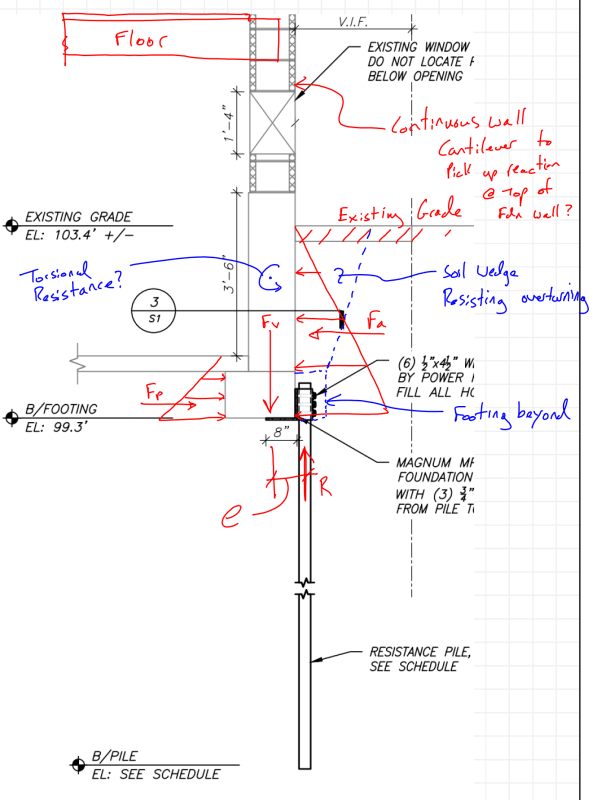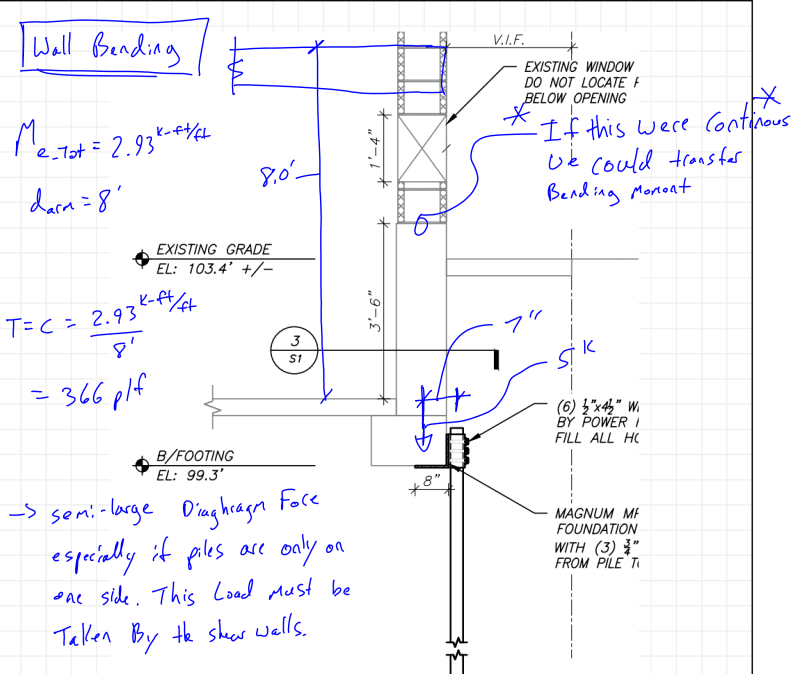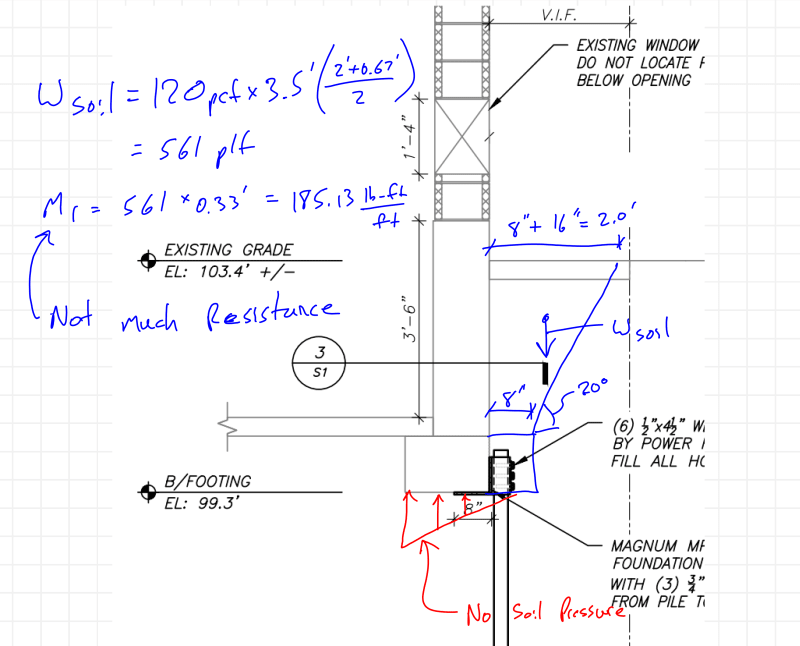RFreund
Structural
- Aug 14, 2010
- 1,885
I am curious about the following situation that I assumed was fairly typical. See Attached Sketch.
An exisitng structure with a strip footing and partial basement (or full basement I suppose) requires underpinnig. A foundation repair bracket with helical or resistance pile is used. According to IBC the pile is laterally unbraced, as far as I can tell it does not meet the requirements of 1810.2.2 (2015 IBC). If the pile is embeded in firm soils (N>4) then the pile is assumed to be braced at a point 5' below grade. If there are soft soils N<=4 but greater than 0, then the pile is considered braced at a depth of 10'.
The ICC-AC358 (acceptance critiera) tests pile repair brackets with the pile shaft unbraced for a length of 5'. Therefore if you have pile/bracket combo that is tested in accordance with the ICC AC358 guidlines, the allowable axial load already considers the moment caused by the eccentricity. However, it would not include the moment due to the lateral earth pressure. How is this situation justified then? A few thoughts:
1. If the foundation was stable before and the bracket/shaft can handle the moment due to the eccentricity, then all is "fine".
2. Check the bracket / shaft for the additonal moment due to lateral earth pressure. Apply the moment to the shaft from the eccentricity and lateral earth pressure. Check the shaft as 5'-0" or 10'-0" unbraced with an appropriate K factor at each end (maybe 0.8?). Check combineded axial and bending.
If you have a shaft in soft soils it seems you have no option but to go with the second case. And it seems like the second case doesn't come close to working. Some additional components offering resistance to the moment created by the eccentricity and the lateral soils pressure:
[ol 1]
[li]The moment strength of the pile.[/li]
[li]Torsion strength of the foundation[/li]
[li]Soil on the exterior side of the footing.[/li]
[li]Passive pressure[/li]
[li]The masonry wall cantilevering down form the floor above.[/li]
[li][/li]
[li][/li]
[/ol]
Sketch

EIT
An exisitng structure with a strip footing and partial basement (or full basement I suppose) requires underpinnig. A foundation repair bracket with helical or resistance pile is used. According to IBC the pile is laterally unbraced, as far as I can tell it does not meet the requirements of 1810.2.2 (2015 IBC). If the pile is embeded in firm soils (N>4) then the pile is assumed to be braced at a point 5' below grade. If there are soft soils N<=4 but greater than 0, then the pile is considered braced at a depth of 10'.
The ICC-AC358 (acceptance critiera) tests pile repair brackets with the pile shaft unbraced for a length of 5'. Therefore if you have pile/bracket combo that is tested in accordance with the ICC AC358 guidlines, the allowable axial load already considers the moment caused by the eccentricity. However, it would not include the moment due to the lateral earth pressure. How is this situation justified then? A few thoughts:
1. If the foundation was stable before and the bracket/shaft can handle the moment due to the eccentricity, then all is "fine".
2. Check the bracket / shaft for the additonal moment due to lateral earth pressure. Apply the moment to the shaft from the eccentricity and lateral earth pressure. Check the shaft as 5'-0" or 10'-0" unbraced with an appropriate K factor at each end (maybe 0.8?). Check combineded axial and bending.
If you have a shaft in soft soils it seems you have no option but to go with the second case. And it seems like the second case doesn't come close to working. Some additional components offering resistance to the moment created by the eccentricity and the lateral soils pressure:
[ol 1]
[li]The moment strength of the pile.[/li]
[li]Torsion strength of the foundation[/li]
[li]Soil on the exterior side of the footing.[/li]
[li]Passive pressure[/li]
[li]The masonry wall cantilevering down form the floor above.[/li]
[li][/li]
[li][/li]
[/ol]
Sketch

EIT




